| The old racecourse
and the Royal Agricultural Show |
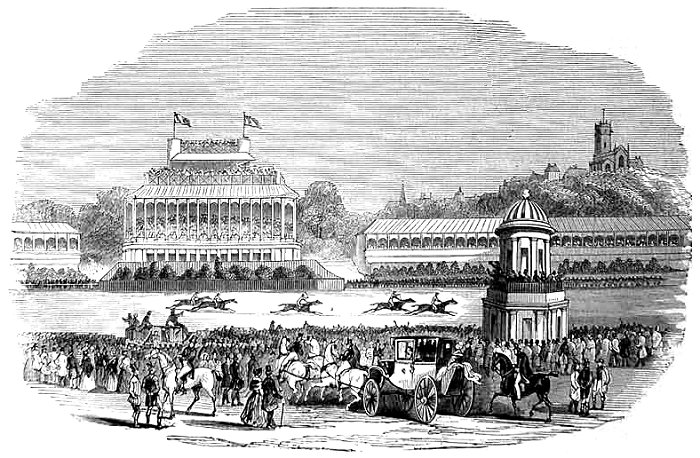
From the Illustrated London News, 17th August,
1844.
| The race meeting on the 12th, 13th and 14th of
August, 1844, at the old racecourse, known as Broad
Meadows, included the following horse races:
Monday 12th: The Produce Stakes, The Wolverhampton
Stakes and The Ladies' Purse.
Tuesday 13th: The Patshull Handicap, The Chillington
Stakes, The Cleveland Cup and the The Borough Members'
Plate.
Wednesday 14th: The Wrottesley Stakes, The Holyoaks
Stakes and The Consolation Plate. |
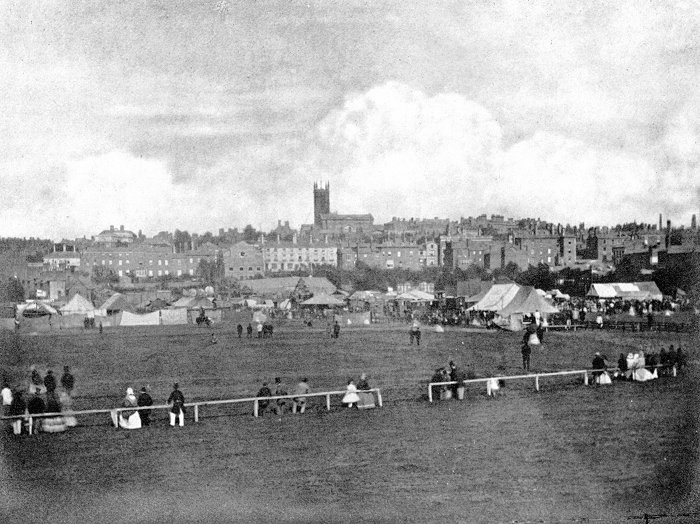
Broad Meadows.
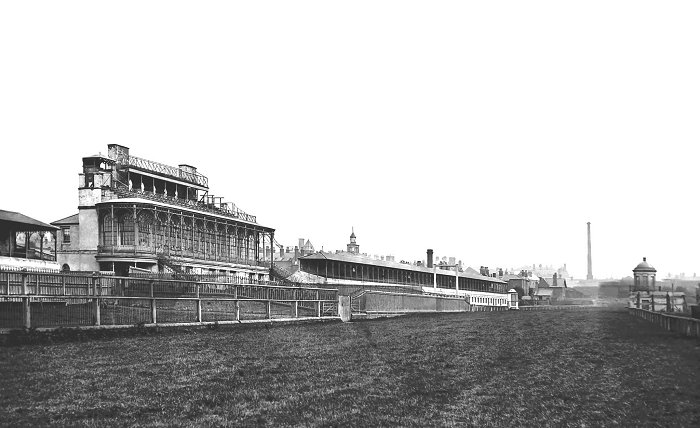
The race track at Broad Meadows.
| In
July, 1871 the Royal Agricultural Show was held at the
old Wolverhampton race course, where West Park is today.
Special trains brought a large number of people to the
event from all over the country. A fund was set up to
pay for the town centre to be suitably decorated and the
council gave £1,000 to help with the fund and also to pay
for entertaining the leading agriculturists and the
gentry who came to the show. Unfortunately, during the
show there were heavy downpours and thunderstorms, which
resulted in parts of the show ground being waterlogged.
Even so it was a great success, with 107,312 people
paying their admission fee at the entrance. |
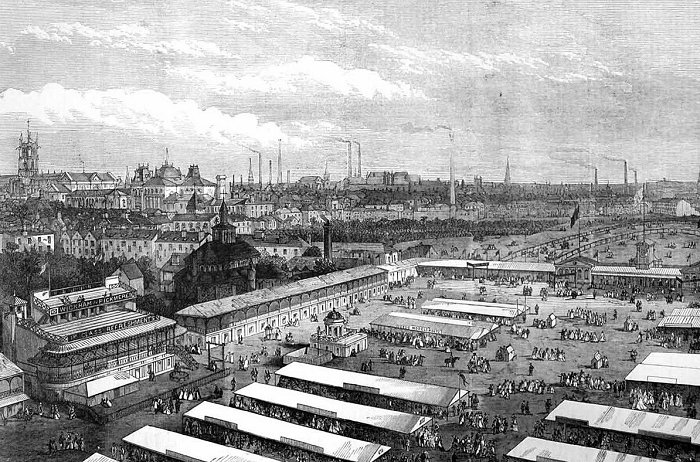
The Royal Agricultural Show at the race
course. From the Illustrated London News.
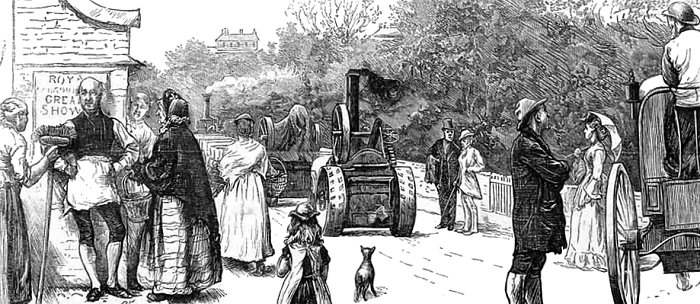
The trial of traction engines at Newbridge.
From The Graphic magazine, July 1871.

A steam train at the show, stuck in the mud.
From The Graphic magazine, July 1871.
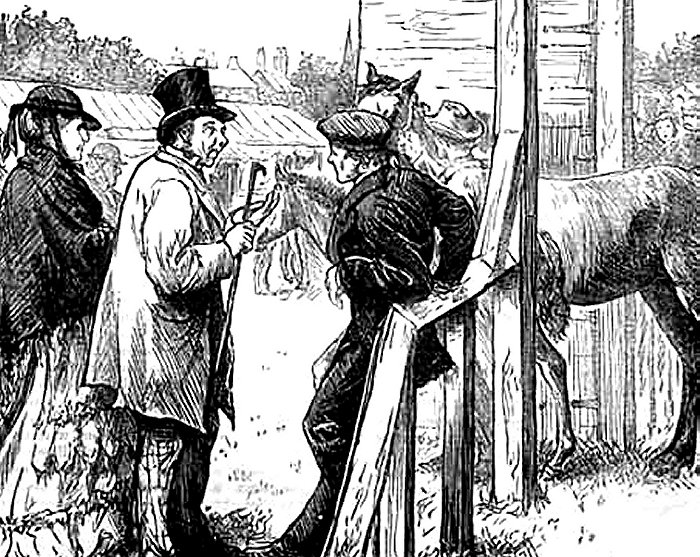
The prize winners' enclosure. From The Graphic
magazine, July 1871.
At the show there were many exhibits, including the
following machines:
| weighbridges,
weighing machines, high pressure pumps from
Joseph Evans, agricultural implements,
brick-making machines, steam engines,
thatch-making machines, wood cutting and
planing machines and ploughs. |
The founding of West
Park
In 1876, Alderman Samuel Dickinson, a successful
ironmaster and metal broker, became Mayor. The lease on
the old Broad Meadows race course was coming to an end
and he thought that the site should be turned into a
public park. The site was owned by the Duke of Cleveland
and so Mr. Dickinson began negotiations with the Duke’s
agent, Mr. Farwell, about the purchase of the site. The
Duke offered to let the Corporation have fifty acres of
the land at an annual rent of £300 for 42
years, then £350 annually for a further 21 years, with
the option of purchasing the site afterwards for £400
per acre. |
| Many people were outraged by the
terms, which were considered to be far too expensive. A
meeting was held in the Exchange Hall for the ratepayers
to have their say about the Mayor’s proposal. The Mayor
then called a council meeting the next day, during which
a vote was taken on the matter.
The members voted overwhelmingly in favour of the building of the
park and a park and baths committee was appointed with
Alderman Dickinson as chairman.
It took nearly four years to make
the park and improve the surrounding streets, at a cost
of around £6,000 and it was not until 1879 that terms
were agreed with the Duke of Cleveland. The last race
meeting at Broad Meadows had been held on September the 26th and
27th, 1878. |
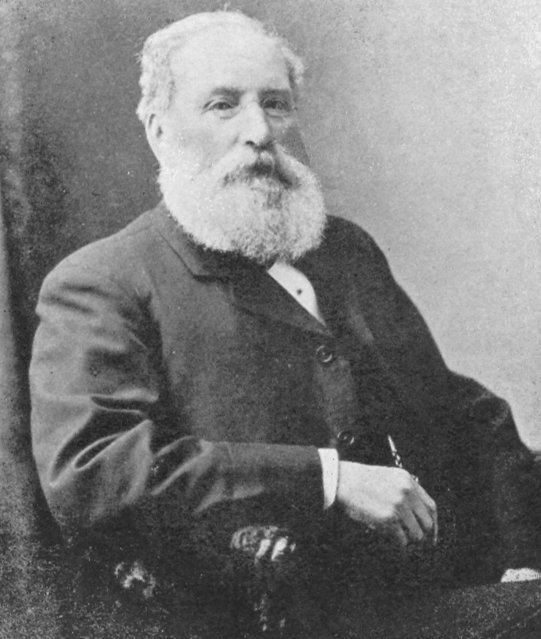
Alderman Samuel Dickinson. |
|
Councillor Greensill, Councillor
Britton and Alderman Jackson presented beautiful
fountains to the park and Councillor Ross paid for a
handsome clock tower, built in 1883. The walls, railings
and gate piers were built by Bayliss, Jones and Bayliss
in 1880, the bandstand was built in 1882 and the
conservatory was built in 1896. The park was officially
opened as West Park in the summer of 1881. It was a
great success and became very popular with the locals.
The Royal Horticultural Flower Show also became
established there.
|
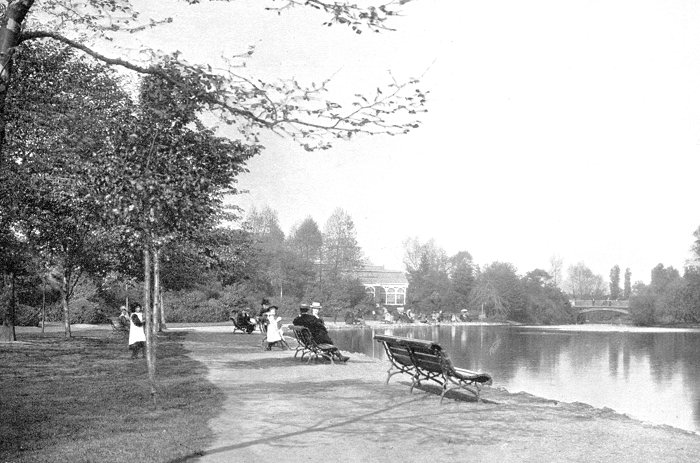
West Park.
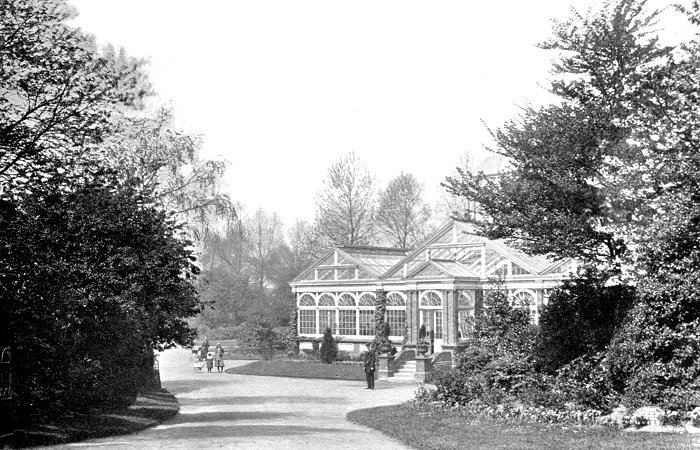
The conservatory.
 |
|
 |
|
 |
Return to
Education |
|
Return to
the beginning |
|
Proceed to
New Town Hall |
|